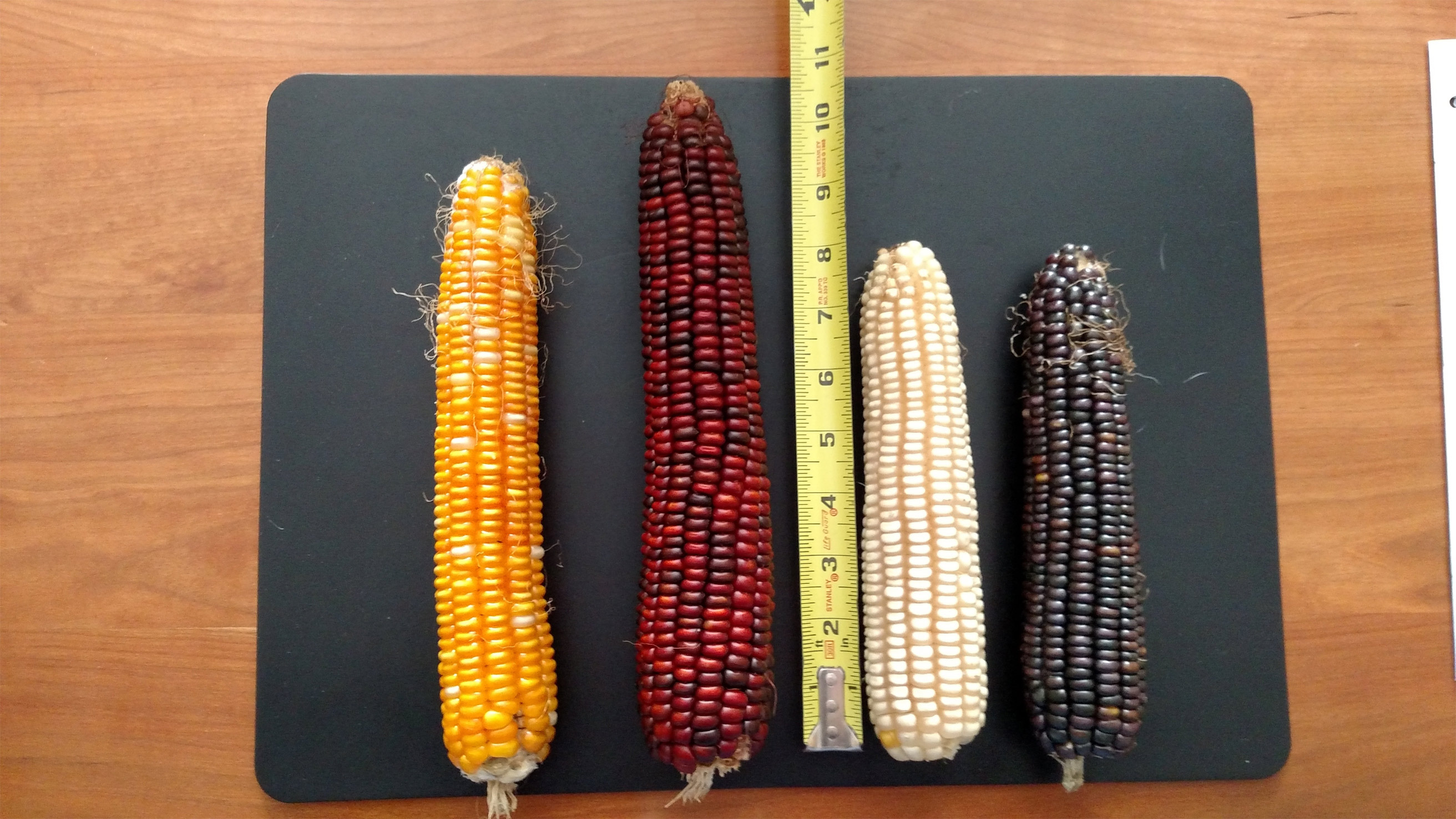Flynn Creek Farms: sustaining the soil and a farmer’s dream with non-GMO seeds and grains

By Arianne Pfoutz
Published: December 25, 2017
Category: The Organic & Non-GMO Report Newsletter, Organic & Non-GMO Seed
Rick Dohm comes from a family of farmers and always wanted to give it a try himself—and got the chance in 2012, when he bought 120 acres of farmland in Montrose, Wisconsin. He later acquired 165 more, and after experimenting with different crops, he now farms 200 acres to produce high quality non-GMO seed, hay, five unique varieties of open pollinated corn, wheat, barley, and soybeans. The entire farm is in transition to organic.
Dohm had a vision of a small farm using sustainable living soil methods to produce non-GMO milling grains and nutritious, biodiverse products for human consumption. Initially Dohm grew hay, corn, and soybeans on a shares basis with a local farmer. “They were Roundup-based commodity products—but there wasn’t enough income doing commodity crops on a cash crop basis,” Rick said.
Then he met Les Niles, who had spent 15 years developing unique strains of yellow, red, white, and blue corn and popcorn, with strong nutritional profiles, to be used for feed and food. Dohm formed a partnership with Niles in 2014 to grow and sell these crops.
“Les’s work fit our vision,” Dohm said. “His corn varieties are different, unique, and serve as specialty items for our region. We primarily sell direct to users, avoiding the middleman.”
The partnership ended in December after three fruitful years but Flynn Creek Farms will continue to sell the corn.
Reinvigorating the soil
Dohm came into farming with an interest in sustainable, biologically active soils. “The original (soil) tests on our land came out poorly,” he said. “The land had been fallow for 30 years. So we’ve been working to get the farm back to its maximum fertility.”
The natural corn seed developed by Niles is non-GMO and open pollinated. Selling open pollinated can be challenging due to negative perceptions of lower yields among farmers—despite the advantage of saving and replanting seed. Dohm has overcome the stereotype by harvesting crops that have performed better than expected.
The main problem Dohm sees with GMOs is that the pesticides remain in the plant. “My intuitive sense is that since Roundup is still there, and the plants will absorb the chemicals, of course that may affect the food chain. We want to find another way, so we’re going all the way to organic.”
Preventing GMO contamination
Flynn Creek Farms, with its hills, has natural barriers to prevent contamination from genetic drift. It’s a labor-intensive process breeding and selling non-GMO seed, but with awareness of your surroundings and adequate protection it’s not difficult to do, Dohm says.
“We plant so that our pollination cycles are out of phase with our neighbors’; our fence lines along with other strategies block drift. All five of our corn varieties were tested for the 2015 and 2016 crop years, and all were completely free of GMO contamination.”
Flynn Creek sells its grain to mills, or sells whole grains to bakers who mill it themselves. Seed is sold directly to farmers, who use the resulting nutritious corn mostly for livestock feed. The corn to be used for human food is sold as whole kernel corn or milled as corn meal.
“I have been told our grains are certifiable organic on the basis of being non-GMO and because they’re unique varieties. But I can’t sell them as organic until our farm is certified organic. We’re halfway through our first year of transitioning to organic.”
Dohm’s challenge is developing new markets; he’s hoping to get higher volume users to try out his products. The hard red winter and hard red spring wheat will attract bakers. A six-row winter barley has been enjoyed by brewers. But day-by-day, he’s living his dream—making a living as a small farmer who’s contributing something unique and special.
Organic versus non-GMO markets
Dohm doesn’t see a huge market demand for non-GMO seed or non-GMO products. “I’d say there’s a fifteen percent premium as a commodity for non-GMO corn and soy, but that addition isn’t enough to make a significant difference overall,” he noted.
“I’d be surprised if that alone (non-GMO) is an expanding market…but organic is certainly growing. Commodity soy brings $9-$10 a bushel, while organic is getting $20-$25 a bushel. We began the process of certifying our products with the Non-GMO Project but because of the costs involved and a limited market for what we were offering, it wasn’t worth it to us. In my opinion, non-GMO certification is of interest to the consumer but doesn’t translate into much gain for the farmer.”




